
 PEHSU Grand Rounds Vaping and Adolescents July 22 at 12:00 pm Eastern Time. posted on Jul 19, 2020 PEHSU Grand Rounds Vaping and Adolescents July 22 at 12:00 pm Eastern Time. posted on Jul 19, 2020 |
|---|
Vaping and Adolescents – Wednesday, July 22 at 12:00 pm ET/11:00 pm CT/10:00 am MT/9:00 am PT Learning Objectives:
Moderated by: Mark Anderson, MD, FAAP
Dr. Mark Anderson is the Medical Director at Kid’s Care Primary and Specialty Care Clinics, Denver Health. Associate Professor of Pediatrics and Epidemiology, University of Colorado School of Medicine and School of Public Health. He serves as the Director of the Rocky Mountain/ Region 8 PEHSU. Presented by: G. Sam Wang
Dr. G. Sam Wang is a pediatric emergency medicine, medical toxicology trained physician at Children’s Hospital Colorado. He academic and research interests include the impact of poisonings and drugs of abuse on the pediatric and adolescent population.
|
 Grand Rounds: Herbal Products and Related Toxicity – August 21, 2019 posted on Mar 16, 2020 Grand Rounds: Herbal Products and Related Toxicity – August 21, 2019 posted on Mar 16, 2020 |
Learning Objectives:At the conclusion of this activity, attendees should be able to:
Presenter: Susan C. Smolinske, PharmD, DABAT, FACCT Director
New Mexico Poison & Drug Information Center
PEHSU Region 6
|
 Grand Rounds: The Role of Early Life Exposures in Late Life Neurodegenerative Disorders - August 15, 2018 posted on Mar 16, 2020 Grand Rounds: The Role of Early Life Exposures in Late Life Neurodegenerative Disorders - August 15, 2018 posted on Mar 16, 2020 |
Learning Objectives:At the conclusion of this activity, attendees should be able to:
Presenter: Samuel M. Goldman, MD, MPH |
 Grand Rounds: Public Health Detailing: A Capacity Building Tool in Disaster Recovery - July 17, 2019 posted on Mar 16, 2020 Grand Rounds: Public Health Detailing: A Capacity Building Tool in Disaster Recovery - July 17, 2019 posted on Mar 16, 2020 |
Learning ObjectivesBy the end of this presentation, participants should be able to:
Presenters: Perry Sheffield, MD, MPH, FAAP; Frances Morales Ramos, MPH; and Teresa Herrera, MPH Perry Sheffield, MD, MPH, FAAP Perry Sheffield, MD, MPH, FAAPDeputy Director
Region 2 PEHSU
Icahn School of Medicine at Mount Sinai
Dr. Perry Sheffield is a pediatrician and environmental health researcher. She is the Co-Director of the NYS Children’s Environmental Centers Network and also Deputy Director of the U.S. EPA Region 2 Pediatric Environmental Health Specialty Unit serving New Jersey, New York, Puerto Rico, and the U.S. Virgin Islands. She completed her fellowship in Pediatric Environmental Health at the Icahn School of Medicine at Mount Sinai in New York City and her Pediatrics training at Johns Hopkins. She studies the health impacts and prevention strategies related to climate change and children.
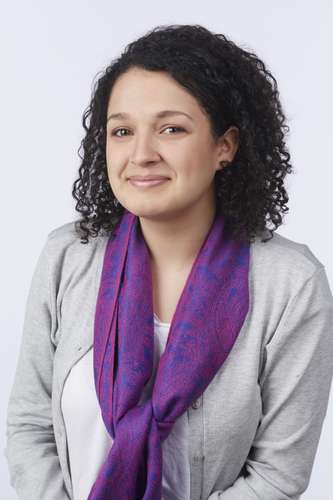 Teresa Herrera, MPH Teresa Herrera, MPHProgram Coordinator
Region 2 PEHSU
Icahn School of Medicine at Mount Sinai
Teresa Herrera works as a Program Coordinator with the Region 2 PEHSU. She manages and oversees the PEHSU’s public health detailing campaign and has worked in the field detailing health providers directly. Past experience includes working as a research fellow at the Institute of Public Health in Cuernvaca, Mexico. She received her BS in Ecology and Evolutionary Biology from CU Boulder and completed her MPH at Mount Sinai. Teresa is committed to addressing environmental justice issues through her work and continues to stay engaged with local environmental health organizations in New York. Research Assistant Icahn School of Medicine at Mount Sinai
Frances Morales Ramos is a Trainee in Dr. Luz Claudio’s Public Health and Environmental Health Training Program at the Icahn School of Medicine at Mount Sinai, working with Dr. Perry Sheffield and Teresa Herrera on the Puerto Rico and the US Virgin Island Hurricane Recovery Campaign. Frances graduated from the University of Puerto Rico Medical Sciences Campus with an MPH and previously worked as a project coordinator for VOCES, Coalition of Vaccination of Puerto Rico (PR), raising awareness about the importance of vaccination in PR. Her past experience with hurricane mitigation and preparation campaigns has enabled her to provide hands on experience regarding capacity building and sustainable methods for the initiative. |
 Grand Rounds: Summer Like It Hot, Some Like It Hotter – Public Health Impact of Environmental Exposure and Extreme Heat - June 20, 2018 posted on Mar 16, 2020 Grand Rounds: Summer Like It Hot, Some Like It Hotter – Public Health Impact of Environmental Exposure and Extreme Heat - June 20, 2018 posted on Mar 16, 2020 |
Learning Objectives:At the conclusion of this activity, attendees should be able to:
Presenter: Scott Crawford, MD, FACEP, CHSOS |
 Grand Rounds: Health Impacts of Volcanic Emergencies - May 29, 2018 posted on Mar 16, 2020 Grand Rounds: Health Impacts of Volcanic Emergencies - May 29, 2018 posted on Mar 16, 2020 |
Learning Objectives:At the conclusion of this activity, attendees should be able to:
Presenters and Panelists:Ziad Kazzi, MD
Associate Professor Emergency Medicine and Medical Toxicology Emory University PEHSU Region 4 John Balmes, MD Core Consultant in Occupational and Environmental Medicine Professor of Medicine, University of California San Francisco Professor of Environmental Health Sciences, School of Public Health University of California, Berkeley PEHSU Region 9 Robert J. Geller, MD Professor of Pediatrics, Emory University Medical Director GA Poison Center PEHSU Region 4 Fuyuen Y. Yip, PhD, MPH Section Chief (acting), Environmental Health Tracking Section Lead Poisoning Prevention and Environmental Health Tracking Branch National Center for Environmental Health | Centers for Disease Control and Prevention Kanta Sircar, MPH, PhD, PMP CDR, US Public Health Service Epidemiologist, Asthma and Community Health Division of Environmental Health Science and Practice National Center for Environmental Health | Centers for Disease Control and Prevention |
 Grand Rounds: Integrating Environmental Health into Existing Early Intervention Public Health Services - May 23, 2018 posted on Mar 16, 2020 Grand Rounds: Integrating Environmental Health into Existing Early Intervention Public Health Services - May 23, 2018 posted on Mar 16, 2020 |
Learning ObjectivesBy the end of this module, participants should be able to:
|
 Grand Rounds: Understanding the Role of Phthalates and Phenols in Fertility, Pregnancy, and Child Health: From Research to Prevention – March 21, 2018 posted on Mar 16, 2020 Grand Rounds: Understanding the Role of Phthalates and Phenols in Fertility, Pregnancy, and Child Health: From Research to Prevention – March 21, 2018 posted on Mar 16, 2020 |
Learning Objectives:By the end of this module, participants should be able to:
Presenter: Carmen Messerlian, PhD, MSc Carmen Messerlian, PhD, MScResearch Scientist
Harvard T.H. Chan School of Public Health
|
 Grand Rounds: Perfluoroalkyl substances (PFAS): Potential sources of exposures, potential health impacts, and guidance for clinicians - March 14, 2018 posted on Mar 16, 2020 Grand Rounds: Perfluoroalkyl substances (PFAS): Potential sources of exposures, potential health impacts, and guidance for clinicians - March 14, 2018 posted on Mar 16, 2020 |
Learning ObjectivesBy the end of this module, participants should be able to:
Presenters Laura Anderko, PhD, RN Laura Anderko, PhD, RN
Director, Mid-Atlantic Center for Children's Health and the Environment
Georgetown University
Region 3 PEHSU
 Susan Buchanan, MD, MPH Susan Buchanan, MD, MPH
Clinical Associate Professor & Associate Director of the Occupational and Environmental Medicine Residency Program
University of Illinois at Chicago (UIC)
Region 5 PEHSU
|
 Grand Rounds: Changing Health Behaviors to Avoid Environmental Exposures-January 17, 2018 posted on Mar 16, 2020 Grand Rounds: Changing Health Behaviors to Avoid Environmental Exposures-January 17, 2018 posted on Mar 16, 2020 |
Learning Objectives:By the end of this module, participants should be able to:
Presented By: Susan Buchanan, MD, MPH
Director, Great Lakes Center for Children’s Environmental Health
University of Illinois at Chicago (UIC) Region 5 PEHSU |
 Grand Rounds: Climate-Smart Healthcare: Protecting our Children, Protecting our Future - November 15, 2017 posted on Mar 16, 2020 Grand Rounds: Climate-Smart Healthcare: Protecting our Children, Protecting our Future - November 15, 2017 posted on Mar 16, 2020 |
Learning Objectives:At the conclusion of this activity, attendees should be able to:
Presented by: Laura Anderko, PhD, RN Laura Anderko, PhD, RNDirector, Mid-Atlantic Center for Children's Health & the Environment Georgetown University Region 3 PEHSU 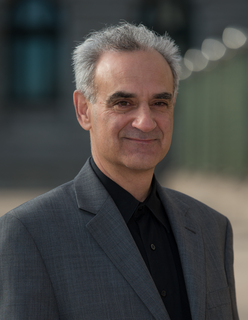 |
 Grand Rounds: Victims of Environmental Injustice: Issues that threaten the children living in poverty where they live, learn and play - October 18, 2017 posted on Mar 16, 2020 Grand Rounds: Victims of Environmental Injustice: Issues that threaten the children living in poverty where they live, learn and play - October 18, 2017 posted on Mar 16, 2020 |
Learning Objectives:At the conclusion of this activity, attendees should be able to:
Presented by:Jennifer A. Lowry, MD
|
 Grand Rounds: How to Optimize a Baby's Epigenetics in a Toxic World - May 22, 2017 posted on Mar 16, 2020 Grand Rounds: How to Optimize a Baby's Epigenetics in a Toxic World - May 22, 2017 posted on Mar 16, 2020 |
Learning ObjectivesBy the end of this module, participants should be able to:
Presenter: Kurt Martinuzzi, MD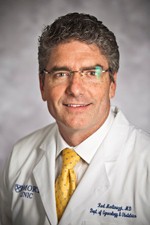 Assistant Professor Assistant ProfessorEmory University
PEHSU Region 3
|
 Journal Club: Environmental Uranium Exposure from Drinking Water - February 15, 2017 posted on Mar 16, 2020 Journal Club: Environmental Uranium Exposure from Drinking Water - February 15, 2017 posted on Mar 16, 2020 |
Learning ObjectivesAt the conclusion of this activity, attendees should be able to:
The presenter will begin by describing the study methodologies used in the journal articles to be discussed. This will be followed by a discussion of the results of the studies under consideration and implications for current clinical and public health practice. The presenter will conclude by discussing preventive steps that can be taken to decrease exposure in the journal articles.
Articles discussed: 1. Kurttio, P., Harmoinen, A., Saha, H., Salonen, L., Karpas, Z., Komulainen, H., & Auvinen, A. (2006). Kidney toxicity of ingested uranium from drinking water. American journal of kidney diseases, 47(6), 972-982. 2. Kurttio, P., Salonen, L., Ilus, T., Pekkanen, J., Pukkala, E., & Auvinen, A. (2006). Well water radioactivity and risk of cancers of the urinary organs. Environmental research, 102(3), 333-338.
3. Orloff, K. G., Mistry, K., Charp, P., Metcalf, S., Marino, R., Shelly, T., Melaro, E., Donohoe, A. M., & Jones, R. L. (2004). Human exposure to uranium in groundwater. Environmental research, 94(3), 319-326.
4. Seldén, A. I., Lundholm, C., Edlund, B., Högdahl, C., Ek, B. M., Bergström, B. E., & Ohlson, C. G. (2009). Nephrotoxicity of uranium in drinking water from private drilled wells. Environmental research, 109(4), 486-494.
|
 Grand Rounds: DC Park Prescription: A Scalable Model for Medicine & Public Health - January 18, 2017 posted on Mar 16, 2020 Grand Rounds: DC Park Prescription: A Scalable Model for Medicine & Public Health - January 18, 2017 posted on Mar 16, 2020 |
Learning ObjectivesBy the end of this module, participants should be able to:
Presenter: Robert Zarr, MD, MPH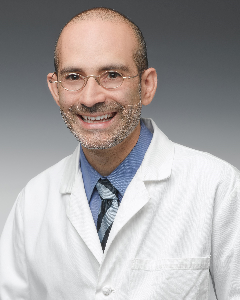 Robert Zarr, MD, MPH
Park Rx Director, Unity Health Care, Inc. National Park Rx Advisor, National Park Service PEHSU Region 3
|
 Grand Rounds: Prioritizing Toxic Chemicals in Children’s Consumer Products - December 14, 2016 posted on Mar 16, 2020 Grand Rounds: Prioritizing Toxic Chemicals in Children’s Consumer Products - December 14, 2016 posted on Mar 16, 2020 |
Learning Objectives:By the end of this module, participants should be able to:
Presented By: Elaine Faustman, PhD and Marissa Smith Elaine Faustman, PhD Elaine Faustman, PhDProfessor
Director of the Institute of Risk Analysis and Risk Communication
University of Washington, School of Public Health Seattle, WA Region 10 PEHSU
PhD Student
University of Washington, School of Public Health
Seattle, WA Region 10 PEHSU
|
 Grand Rounds: Ecology of Children's Environmental Health Disparities: November 11, 2016 posted on Mar 16, 2020 Grand Rounds: Ecology of Children's Environmental Health Disparities: November 11, 2016 posted on Mar 16, 2020 |
Learning Objectives:By the end of this module, participants should be able to:
Presented By: Leslie Rubin, MD Leslie Rubin, MDPresident, Innovative Solutions for Disadvantage and Disability Associate Professor, Department of Pediatrics, Morehouse School of Medicine Co-director, Southeast Pediatric Environmental Health Specialty Unit, Emory University Medical Director, Developmental Pediatrics Specialists Atlanta, GA Region 4 PEHSU
|
 Grand Rounds: Shifting Gears: The Built Environment and its Role in Reducing Health Disparities - April 12, 2016 posted on Mar 16, 2020 Grand Rounds: Shifting Gears: The Built Environment and its Role in Reducing Health Disparities - April 12, 2016 posted on Mar 16, 2020 |
Learning ObjectivesAt the conclusion of this activity, attendees should be able to:
• Increase participants’ knowledge of how development and use of the built environment affects population health • Describe national statistics on health outcomes and disparities • Discuss successful community development projects regarding the built environment • Recognize role of environmental public health advocates in Health Impact Assessment plans Presented by: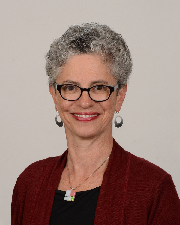 Lois Wessel, RN, FNP-BC Lois Wessel, RN, FNP-BCGeorgetown University School of Nursing and Health Studies Washington, DC Region 3 PEHSU
|
 Grand Rounds: It’s a dirty planet! How to reduce your exposure to toxins. - March 8, 2016 posted on Mar 16, 2020 Grand Rounds: It’s a dirty planet! How to reduce your exposure to toxins. - March 8, 2016 posted on Mar 16, 2020 |
Learning ObjectivesAt the conclusion of this activity, attendees should be able to:
|
 Grand Rounds: Doc, what’s the answer? Addressing parents' environmental health concerns about a community-level exposure-December 8, 2015 posted on Mar 16, 2020 Grand Rounds: Doc, what’s the answer? Addressing parents' environmental health concerns about a community-level exposure-December 8, 2015 posted on Mar 16, 2020 |
Learning Objectives:At the conclusion of this activity, attendees should be able to:
Presented By:Maida Galvez, MD, MPH, FAAP
Associate Professor in the Departments of Preventive Medicine and Pediatrics; Co-director of the Mount Sinai Transdisciplinary Center for Early Environmental Exposures Community Outreach and Engagement Core
New York, NY
Region 2 PEHSU 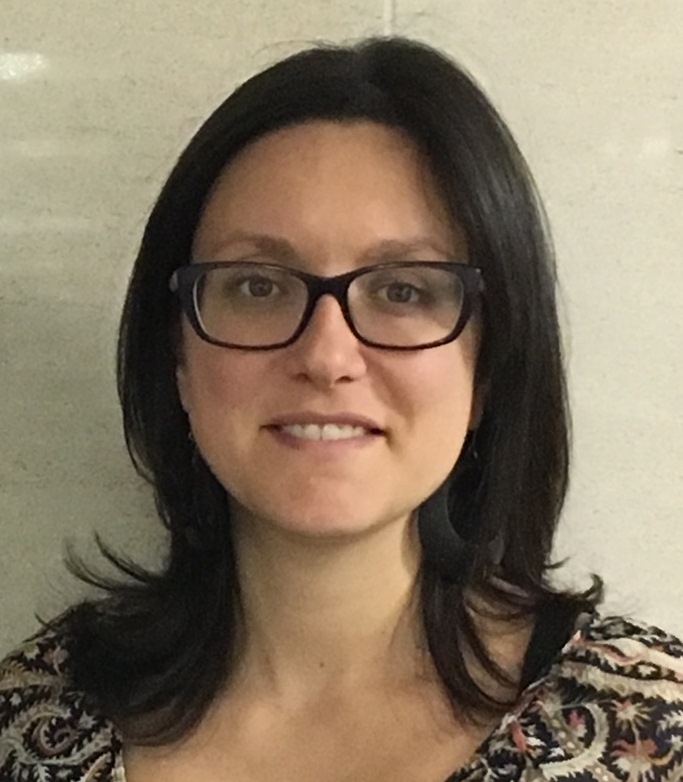 Lauren Zajac, MD, MPH
Fellow - Pediatrician at Icahn School of Medicine at Mount Sinai
New York, NY
Region 2 PEHSU
|
 Journal Club: Hormesis - Do Little Things Matter? - November 18, 2015 posted on Mar 16, 2020 Journal Club: Hormesis - Do Little Things Matter? - November 18, 2015 posted on Mar 16, 2020 |
Learning ObjectivesAt the conclusion of this activity, attendees should be able to:
The presenter will begin by describing the study methodologies used in the journal articles to be discussed. This will be followed by a discussion of the results of the studies under consideration and implications for current clinical and public health practice. The presenter will conclude by discussing preventive steps that can be taken to decrease exposure to endocrine disruptors as evidenced in the journal articles.
Articles discussed: 1. Evidence for hormesis in mutagenicity dose-response relationships. 2. An illusion of hormesis in the Ames test: Statistical significance is not equivalent to biological significance. 4. Natural Variability and the Influence of Concurrent Control Values on the Detection and Interpretation of Low-Dose or Weak Endocrine Toxicities. |
 Grand Rounds: Introduction to EPA's Toxics Release Inventory - October 20, 2015 posted on Mar 16, 2020 Grand Rounds: Introduction to EPA's Toxics Release Inventory - October 20, 2015 posted on Mar 16, 2020 |
Learning Objectives:At the conclusion of this activity, attendees should be able to:
Presented By: Jocelyn Hospital, MS
Toxicologist
Toxics Release Inventory (TRI) Program
US Environmental Protection Agency (EPA)
Washington, DC
Kara Koehrn, MEM, BS
Toxicologist and Data Analyst
Toxics Release Inventory (TRI) Program
US Environmental Protection Agency (EPA)
Washington, DC
|
RSS |











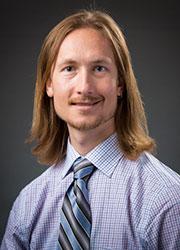 Scott Crawford, MD, FACEP, CHSOS
Scott Crawford, MD, FACEP, CHSOS Abby Mutic, MSN, CNM
Abby Mutic, MSN, CNM
 Alan Woolf, MD, MPH, FAAP, FAACT, FACMT
Alan Woolf, MD, MPH, FAAP, FAACT, FACMT
 Jennifer Lowry, MD, FACMT
Jennifer Lowry, MD, FACMT